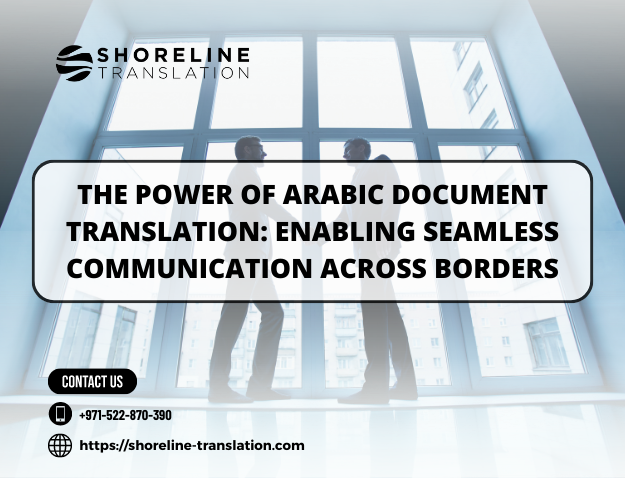Table of Contents
Toggle10 Simple Tips for Finding Success with Your English to Creole Translation Projects
Are you struggling to reach success with your English to Creole translation project? If so, you’ve come to the right place. In this blog post, we’ll be exploring 10 simple tips that can help dramatically improve your success rate when it comes to translating between these languages. Whether you’re a professional linguist or an individual seeking self-improvement in this domain, these insights and advice will prove invaluable. So if you’re ready for the journey ahead, let’s dive straight into our exploration of practical ideas designed specifically for English-to-Creole translators!

Tip #1: Choose a Professional English to Creole Translator
It’s important to choose wisely when selecting an English to Creole translator for your translation project. Look for a certified professional translator with experience and education in both English and the language you need to be translated. When hiring, ask to review their qualifications and certificate of proficiency. You should also review examples of their work, or even better, obtain references from past clients who have worked with them before. With the right professional on board, you can be sure the accuracy of your translation will be spot-on and make a lasting impression.
The importance of finding a professional translator
The Importance of Finding a professional translator or interpreter who is fluent in the language you need cannot be underestimated. Having a reliable translator or interpreter ensures that your information is accurately communicated and understood by all parties involved. Professional translators and interpreters are also able to provide insight into cultural nuances, which may help to bridge communication gaps and facilitate better understanding. Professional translators and interpreters should have extensive knowledge of the culture, politics, and history of the region in which they work in order to ensure accuracy when translating documents or interpreting conversations. Additionally, a professional translator or interpreter can help to improve overall communication within an organization, making it easier for different departments to collaborate effectively with one another. In this way, having a reliable professional translator or interpreter on staff can significantly increase efficiency in both international business and diplomacy.
Overall, finding a professional translator or interpreter is essential for any organization or individual that needs to communicate in another language. Professional translators and interpreters are able to ensure accuracy when translating documents and interpreting conversations, while also providing insight into the culture of the region they are working in. By having a reliable translator or interpreter on staff, organizations can reduce misunderstandings and increase efficiency by enabling different departments to collaborate effectively with one another. Ultimately, having access to professional translation services and interpretation will help organizations achieve their goals more quickly and efficiently.
key traits and qualifications to look for in potential translators
Professional translators should have native-level fluency in both the source and target languages, with a high level of proficiency in grammar, syntax, and vocabulary from both languages. Translators should also be familiar with the culture, politics, and history of the region they are working in order to provide accurate translations that are not just literal but also culturally sensitive and appropriate. Interpreters should also possess native language proficiency as well as excellent listening skills and an ability to think on their feet when responding to unexpected questions or changes in conversation topics. Furthermore, a professional interpreter should have strong communication skills in order to ensure smooth dialogue between all parties involved. Additionally, finding someone who is certified by a recognized translation agency can be helpful for ensuring that the translator or interpreter meets the necessary qualifications.
Ultimately, it is important to find a professional translator or interpreter who has the necessary language proficiency and cultural understanding in order to provide accurate translations and interpret conversations accurately. With their help, organizations and individuals can effectively communicate across languages and cultures with greater understanding and efficiency. The importance of finding an experienced, reliable translator or interpreter cannot be underestimated.
Tip #2: Clarify Requirements Before Starting the Project
Before you begin a project, it’s important to be sure that the requirements are clearly defined. This means understanding what type of results are expected and getting everyone on the same page about how to achieve them. A lack of clarity can lead to confusion and miscommunication, leading to delays or other issues in the completion of your project. Make sure you have a good understanding of the goals you’re working towards before beginning a project for greater success.
This includes having an established timeline and clear milestones that need to be met along the way. It also includes setting up processes and procedures for communicating information between team members effectively so that everyone is aware of progress updates as they come in. By ensuring that all stakeholders are on the same page from the beginning, you can minimize misunderstandings and ensure that the project runs smoothly.
Finally, it’s important to check in regularly with stakeholders throughout the project to make sure everyone is still in agreement on what needs to be accomplished. This will help keep everyone up-to-date and allow for any changes or updates that need to be made as the project progresses. Doing this will help ensure that your project stays on track and ultimately meets its desired goals.
Go over the scope of your project and discuss the objectives with your translator
Discuss the objectives with your translator in order to ensure that everyone is clear on the requirements and expectations. This way, you can make sure that your project is completed on time and within budget.
By taking the time to clarify the requirements of your project before you get started, you will be better equipped for a successful outcome. By understanding what results are expected and getting everyone in agreement about how to achieve them, you can reduce misunderstandings and complete the project quickly. Communication between stakeholders is key here so make sure to stay up-to-date with progress updates as they come in. Doing this will help ensure that your project meets its desired goals while avoiding any unnecessary delays or issues throughout the process.
Emphasize clarity and accuracy when explaining your requirements
Make sure you review them with your translator to ensure that everyone is on the same page. This will help guarantee a successful outcome for your project in the end.
With clear expectations and a good understanding of the project, you will be more likely to achieve your desired results in a timely manner. Take the time to talk to your translator about any questions or concerns they may have before beginning a project. This process ensures that everyone is informed and up-to-date on the goals, timeline, and other requirements set forth for successful completion. By clearly communicating with each other throughout the process, you can reduce misunderstandings and ensure a successful outcome for all involved.
By taking the time to understand and clarify your project requirements from the start, you can avoid unnecessary confusion or delays during the course of your project. Establishing clear objectives and communication processes between stakeholders can help keep everyone on the same page and ensure that the project is completed successfully. Be sure to review your requirements with your translator and emphasize accuracy and clarity throughout the process. This way, you can make sure that everyone is informed and up-to-date on the goals of the project in order to achieve a successful outcome.
Tip #3: Take Time To Research Potential Translators Before Choosing One
Researching potential translators is a key step in the process of finding someone who can provide services that meet your needs. Take the time to read through translator profiles and portfolios to ensure that they have the right experience, skill set, and qualifications for your project. Also, talk to references and ask questions about their experience to get a better idea of how they work. Finally, make sure you find out more about the terms of service before hiring any translator so that you are clear on what you can expect from them. Doing this will save you time in the long run and help ensure that your project runs smoothly with a successful outcome.
Research each potential translator’s past work and experience
Check each translator’s portfolio to get a better understanding of their capabilities. Ask for references and check them out to make sure that you’re working with someone who is reputable and experienced in the field. This will help guarantee successful results for your project in the long run. Once you’ve found a translator that meets your requirements, take time to discuss details of the project such as deadlines, budgets, and expectations. Make sure that everyone is on the same page before beginning any work so that there are no surprises or misunderstandings down the line.
Ask questions about their approach to translations and any techniques they might use that could help you achieve better results on your project
Knowing what processes they use will also give you an idea of how long it might take to complete the project and any potential issues that may arise during translation. By taking the time to research potential translators, you can find someone who meets your needs and provide a successful outcome for your project.
By following these tips, you’ll be more likely to achieve successful results on your translation projects. Taking the time to clarify expectations and discuss details with your translator before beginning work, researching potential translators thoroughly, and emphasizing clarity and accuracy in all communications can help ensure that your project runs smoothly from start to finish.
Now that you’ve read through our tips on how to make sure your translation project is successful, why not put them into action? Take the time to find a translator that meets your needs, set clear expectations and goals for the project, and emphasizes accuracy and clarity throughout the process. With these steps, you can ensure that your project is completed on time and within budget with successful results.
Tip #4: Set Clear Expectations On Timelines & Deadlines
One of the most important steps to ensuring a successful translation project is setting clear expectations on timelines and deadlines. Establishing these guidelines early on in the project will help ensure that both parties understand when certain tasks need to be completed and can prevent any fusion or delays during the course of your project. Be sure to review your requirements with your translator and emphasize accuracy and clarity throughout the process. This way, you can make sure that everyone is informed and up-to-date on the goals of the project in order to achieve a successful outcome.
Tip #5: Prepare A Glossary Of Term Definitions For Your Translator
Having a glossary of term definitions prepared for your translator can be immensely helpful in ensuring accuracy throughout your project. Defining and providing context to key terms helps translators better understand the meaning of words, allowing them to accurately capture the intended meaning and tone of the source document. Make sure to review any terminology with your translator so that there are no misunderstandings or mistranslations down the line. Doing this will save you time in the long run and help ensure that your project is completed with successful results.
By following these tips, you’ll be more likely to achieve successful results on your translation projects. Taking the time to clarify expectations and discuss details with your translator before beginning work, researching potential translators thoroughly, emphasizing clarity and accuracy in all communications, setting clear expectations on timelines and deadlines, and preparing a glossary of term definitions can help guarantee successful results for your project in the long run.
Tip # 6: Double Check The Results After Completion
Once your project is completed, be sure to double-check the results. This is a crucial step in ensuring accuracy throughout the project. Reviewing your translated document with an eye for detail will help ensure that all of the content was accurately and properly captured and that nothing has been lost or omitted in the translation. Doing this also allows you to provide feedback if necessary which can help prevent similar mistakes from occurring down the line.
Tip #7: Allow Enough Time For Editing & Proofreading
Another key tip for ensuring a successful translation project is to allow enough time for editing and proofreading. Having an experienced editor or proofreader review your translated document can help catch any mistakes that may have been missed in the initial translation process. This will help ensure accuracy throughout your project and guarantee that you are delivering quality results to your clients. It is also important to note that editing and proofreading can add additional costs or fees, so be sure to factor this into your budget when planning for a translation project.
Hire additional proofreaders who can provide a third-party review of the completed translation.
This can help ensure accuracy and provide valuable feedback that can be used to improve the quality of your future translation projects. Additionally, consider using a professional translation service if the project involves multiple languages or complex subject matter that require specialized knowledge. Professional translation services can provide quality assurance and detailed feedback to ensure accuracy throughout the entire process. Finally, take advantage of any translation-related technologies that are available to streamline the workflow and help make your translation projects easier to manage.
Implementing these strategies can help ensure that you get high-quality translations every time. With careful review, accurate translations, and effective management, you can ensure that your multi-language projects are successful and achieve the desired results.
Tip #8: Investigate Different Software Programs That Can Aid Your Translation Efforts
Software such as translation memory (TM) and computer-assisted translation (CAT) tools can be incredibly helpful in streamlining your workflow. Translation memories store previously translated content and allow you to access it quickly when needed, while CAT tools help automate the process of translating large amounts of text. There are also other software programs available that can assist with proofreading, editing, and quality assurance, so it is important to explore all of your options before selecting a program. Investing in the right software can have a significant impact on the overall efficiency of your translation project.
Finally, make sure that all personnel involved in the project are familiar with any software being used prior to beginning the task. This will help ensure that everyone understands the tools and can use them to their fullest potential. Investing in the right software and familiarizing everyone with it can have a positive effect on the success of your translation projects.
Tip #9: Invest In Quality Assurance
Quality assurance is essential to any successful translation project. It is important to thoroughly review all translated material before final delivery, ensuring that all content is accurate and consistent throughout the entire document. Consider assigning one or more individuals from your team who are bilingual in both languages used for the project to serve as proofreaders or editors, providing an additional layer of quality control. Additionally, consider hiring professional proofreaders or translators if necessary, especially for large-scale projects that involve multiple languages. Quality assurance teams should also be responsible for checking any software tools used in the project to ensure accuracy and consistency.
By following these tips, you can help ensure that your translation projects are executed successfully and achieve the desired results. Taking the time to plan ahead, review all translated material, utilize available technology, and invest in quality assurance will help make sure your multi-language projects are a success.
Tip 10: Track Your Results
Once the translation project has been completed, it is important to track your results. This can help you identify any areas of improvement for future projects and highlight which strategies were most successful. Consider tracking metrics such as turnaround time, cost, accuracy, consistency, and customer feedback. Gather data from both internal sources (such as team members) and external sources (such as customers). Comparing this data can help you assess the overall effectiveness of your translation process and better prepare for future projects. Additionally, consider using surveys or questionnaires to obtain feedback from customers regarding their experience with your translations. Evaluating the performance of past projects will allow you to continuously improve and adjust processes in order to deliver exceptional results.
By following these tips for successful multi-language projects, you can ensure that each project is completed efficiently and effectively. With proper planning, an organized workflow, the right technology, and effective management, you can ensure that your multi-language projects are successful and achieve the desired results. Additionally, tracking your results and gathering feedback from customers will help you identify areas of improvement and better prepare for future projects.
Shoreline Company for English to Creole translation
Our experienced translators are experts in English to Creole translation services, making sure that your words, intentions and ideas are accurately translated into Creole. From business documents to personal letters, our team of translators has the knowledge and experience to produce skilled translations quickly and accurately.
We specialize in a variety of areas such as legal documents, medical reports, technical paperwork, literary works and more. No matter what type of document you need to be translated from English to Creole, Shoreline Company is here for you. We guarantee 100% accuracy with each project we complete ensuring that your message is conveyed correctly every time.
Whether you need a small document like a birth certificate or a large project like an entire website, our English to Creole translation services is designed to provide quick and efficient results. Our team of translators works diligently to ensure that your document is translated with accuracy and precision. We also offer a variety of additional services such as proofreading, editing and formatting so you can be sure your translation is perfect every time.
When you choose Shoreline Company for English to Creole translation services, you can rest assured that you’re getting the best service possible. With years of experience in providing accurate translations and excellent customer service, we guarantee satisfaction with each job we complete. Contact us today to get started on your next English to Creole translation project!
Conclusion
In conclusion, with the help of Shoreline Company for Translation, finding success with your English to Creole translation projects is not as difficult as it may seem. By taking into account the 10 simple tips outlined in this article such as breaking down long texts into smaller chunks, using online resources and tools, and working with professional translators, you can ensure that your English to Creole translations will be accurate and effective. A reliable translation company like Shoreline Company for Translation offers high-quality English to Creole translation services that guarantee accuracy and timeliness while also providing cost-effective solutions. With its experienced team of native speakers, advanced technology and commitment to client satisfaction, Shoreline Company for Translation provides the best service available on the market today for English to Creole translation projects.
With the help of Shoreline Company for Translation, you can rest assured that your translations will be performed with accuracy and expertise. With its commitment to quality and customer satisfaction, Shoreline Company for Translation helps ensure your English to Creole translations are a success.





